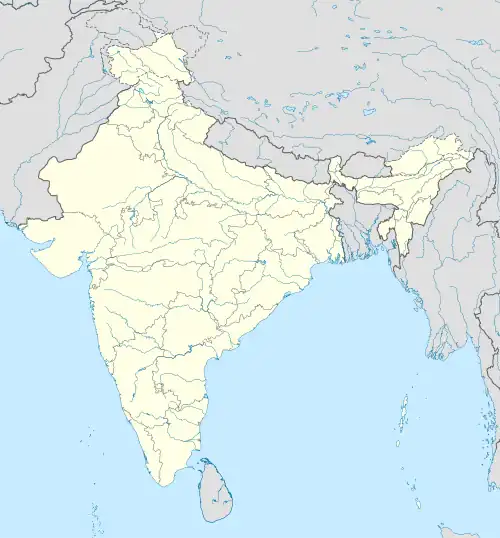𑀢𑀺𑀁𑀦𑀺
Ashokan Prakrit
Etymology
From Sanskrit त्रीणि n (trī́ṇi) (see त्रि m (trí)), from Proto-Indo-Aryan *tráyas, from Proto-Indo-Iranian *tráyas, from Proto-Indo-European *tréyes. Cognate with Pali tīṇi.
Alternative forms
Attested at Allahabad-Kosambi, Delhi-Meerut, Delhi-Topra, Dhauli, Jaugada, Kalsi, Lauriya-Araraj, Lauriya-Nandangarh and Rampurva.
| Dialectal forms of 𑀢𑀺𑀁𑀦𑀺 (“three”) | ||
|---|---|---|
| Variety | Location | Forms |
| Central | Kalsi | 𑀢𑀺𑀦𑀺 (tini), 𑀢𑀺𑀁𑀦𑀺 (tiṃni) |
| Delhi-Topra | 𑀢𑀺𑀁𑀦𑀺 (tiṃni) | |
| Delhi-Meerut | 𑀢𑀺𑀁𑀦𑀺 (tiṃni) | |
| Rampurva | 𑀢𑀺𑀁𑀦𑀺 (tiṃni) | |
| Lauriya-Nandangarh | 𑀢𑀺𑀁𑀦𑀺 (tiṃni) | |
| Lauriya-Araraj | 𑀢𑀺𑀁𑀦𑀺 (tiṃni) | |
| Allahabad-Kosambi | 𑀢𑀺𑀁𑀦𑀺 (tiṃni) | |
| East | Dhauli | 𑀢𑀺𑀁𑀦𑀺 (tiṃni) |
| Jaugada | 𑀢𑀺𑀁𑀦𑀺 (tiṃni) | |
| Northwest | Shahbazgarhi | 𐨟𐨿𐨪𐨩𐨆 (trayo) |
| Mansehra | 𐨟𐨁𐨣𐨁 (tini) | |
| West | Girnar | 𑀢𑀻 (tī), 𑀢𑁆𑀭𑀻 (trī) |
| Map of dialectal forms of 𑀢𑀺𑀁𑀦𑀺 (“three”) | ||
|---|---|---|
Descendants
- Ardhamagadhi Prakrit: 𑀢𑀺𑀡𑁆𑀡𑀺 (tiṇṇi)
- Magadhi Prakrit: 𑀢𑀺𑀡𑁆𑀡𑀺 (tiṇṇi)
- Khasa Prakrit:
- Nepali: तीन (tīna)
- Magadhi Prakrit:
- Maharastri Prakrit:
- Paisaci Prakrit:
- Sauraseni Prakrit:
- Khasa Prakrit:
- Maharastri Prakrit: 𑀢𑀺𑀡𑁆𑀡𑀺 (tiṇṇi)
- Khasa Prakrit:
- Nepali: तीन (tīna)
- Magadhi Prakrit:
- Maharastri Prakrit:
- Paisaci Prakrit:
- Sauraseni Prakrit:
- Khasa Prakrit:
- Sauraseni Prakrit: 𑀢𑀺𑀡𑁆𑀡𑀺 (tiṇṇi)
- Khasa Prakrit:
- Nepali: तीन (tīna)
- Magadhi Prakrit:
- Maharastri Prakrit:
- Paisaci Prakrit:
- Sauraseni Prakrit:
- Khasa Prakrit:
- Northern:
- Bhadrawahi: ट्ळा (ṭḷā)
References
- Sen, Sukumar (1960) A Comparative Grammar of Middle Indo-Aryan, Linguistic Society of India, page 133.
- Turner, Ralph Lilley (1969–1985) “tráyaḥ”, in A Comparative Dictionary of the Indo-Aryan Languages, London: Oxford University Press
This article is issued from Wiktionary. The text is licensed under Creative Commons - Attribution - Sharealike. Additional terms may apply for the media files.
